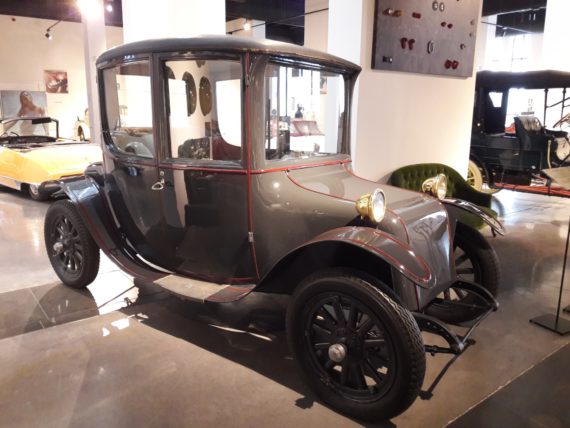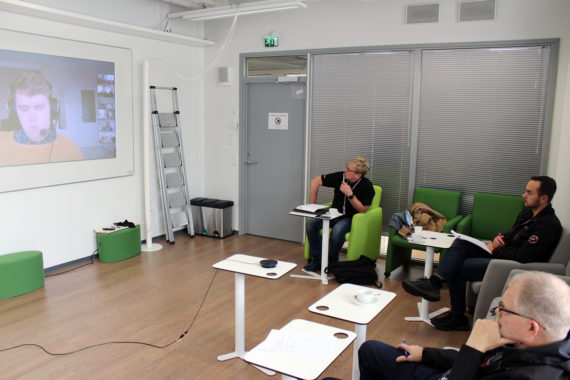In 1910, the world’s largest manufacturer of wagons, George Milburn (1820-1883) had a vision that the electric car could be made lighter, lower and cheaper. He opted to get into electric car manufacture. During their eight years of production, from 1915 to 1923, Milburn Wagon Company produced over 4,000 electric cars.
Milburn was one of the more successful makers of electronic automobiles. Powered by batteries, this car provided an exhaustless and almost silent ride. The Milburn was the lowest-priced electric of the time and much lighter than its competition. While easy to drive and elegant, it was also slow, achieving a top speed of only 20 miles per hour. It also could not go very far even on a full charge with only a 60 to 75 mile range. By the early 1920s, electric cars had lost their popularity to gasoline-engine cars.
Electric cars have been around for over a hundred years now and their popularity is constantly rising. In 2019, the sales of electric cars reached 2.1 million globally. The leading country in the share of sales of new cars running on electricity is Norway with 56% and Iceland holds the second place with 25.5%.

In Transition – Passenger Cars in Finland 2020-2030
In the Future Professions workshop, RDI Specialist, Futures Researcher Tero Villman presented the results of his research, In Transition – Passenger Cars in Finland 2020-2030. The research provides interesting insight into the current state and the future of transport with focus on the technological change regarding passenger cars. It identifies trends, driving forces and weak signals regarding and around passenger cars in Finland in 2020 to 2030. The research forms an informational foundation for further activities in the Race4Scale project.
In Finland, the current dominant mode of transport is passenger car, of which there are nearly 2.8 million in traffic use. The share of petrol or diesel plug-in hybrids is 1.2% and only 0.23% of passenger cars are battery electric vehicles. The majority of passenger cars, 70%, are powered by petrol, followed by 28% of diesel powered. However, the growth of new registrations of plug-in hybrids and battery electric vehicles is significant and increasing. In 2019, they represented 6.9% of new registrations and from January to September in 2020 already 16.7%.
In the future, towards 2030, passengers cars are expected to continue as the dominant mode of transportation in Finland, but the number of passenger cars is not expected to grow significantly. There are alternatives to drivetrains and energy sources for internal combustion engine vehicles, but they are expected to remain dominant. The share of electric vehicles is expected to grow to 8-30% of the passenger cars in traffic use in 2030.
Technical development is at the core of possibilities and uncertainty in the future. Research and development investments by car manufacturers have significantly increased since 2010. Currently, electrification is seen as the most viable solution of alternative powertrains to reduce emissions and avoid penalties. Driving automation increases safety, comfort and productivity. Overall, digitalization and urbanization change customer expectations and behavior, and create possibilities for new business models.
Motorsport Industry – Interesting and Challenging Career Opportunities
Tuija Arola, PhD., Development Director at Adult Education Taitaja Global Education Services, presented her research about the Interesting and Challenging Career Opportunities in Motorsport Industry.
Motor racing provides an ideal environment and race teams ideal capabilities for the automotive industry to develop and test technological innovations. The whole automotive industry benefits from this trickle-down effect. Motor sport serves as a platform to demonstrate new technologies on global scale. Especially Formula 1 is a forerunner on technological innovations. The professionals interviewed for the research agreed that important future innovations will be related to energy recovery, energy technology and battery recharge rates.
FIA, Fédération Internationale de l’Automobile, is a governing body for motorsport globally, that brings together 243 international organizations. In 2017, FIA created an environment and sustainability commission. FIA’s Environmental Accreditation Programme is aimed at helping motor sport stakeholders worldwide to measure and enhance their environmental performance.
In public debate motor sport is often accused for polluting and being a waste of natural resources but, in truth, Formula 1 has been a forerunner in sustainability. Formula 1 announced their sustainability plan in 2019, which aims to a net-zero carbon footprint by 2030. Formula E is a single-seater motorsport championship that uses only electric cars. Formula E’s three core values are energy, environment and entertainment. Formula E has a vision for the future of motorsport that includes electric vehicles, clean energy sources, staying connected to enhance safety via data-sharing between cars, car sharing fleets to reduce emissions and consumption, and autonomous, self-driving cars to promote productivity. Formula E is also a forerunner in gamification.
The research has been able to document the features of top mechanics in motorsport and thus provides information on what kind of qualities should one aiming for the industry to have. Teams have specialists from very different fields. Working in motor sport requires resilience, motivation, enthusiasm and self-confidence. One should also be precise and disciplined team player. Being innovative and proactive are also good qualities to have. Working in motor sport naturally includes lots of travelling so one must be willing to travel and even live abroad and not get homesick. The required skills are typically obtained by a basic training, but hobbies related to and interest in the field is also important.
Building a career in motor sport is a long path from bottom to top. Teams are actively headhunting for good mechanics and hardworking individuals are recognized. Demonstration of skills and motivation is required. Best way to score a job in the field is to actively market ones skills and build a network. References are always asked when recruiting new team members.
Team working
Mikhail Nemilentsev presented the instructions to team working and problem solving. He presented the basic conditions and commitments required for team working. The flow for team working is divided into four simple steps: Framing, structuring, collecting materials and information, and understanding. This cycle repeats as needed. The presentation also gave ideas for brainstorming. This was an orientation and basis for the teams to start working on the given topics.

For group working, the participants were given themes to work on. Topics were based on the researches presented earlier. Each group had two topics and they were asked to answer two simple questions in their presentation later: What and why. The topics were shared between the groups:
- Continuous learning in a constantly evolving domain.
- Cars for other uses in addition to mobility: The transportation of people and goods from one place to another is only one use case; Similarly to mobile phones, where calling was the first use case.
- New services: Understanding technology and new possibilities; Understanding and providing best solutions for customer needs; Shifting from product sales to lifecycle services.
- Features of a top mechanic in motorsports.
- Motorsport is a forerunner in sustainability.
- Technological development brings possibilities and uncertainty.
Groups had one and half hour to work on their topics and then present their ideas at the end of the day in 3-5 minutes and one slide or page. These presentations were to be saved in order to continue working on the topics on Workshop Day 2. Groups were also asked to take notes on other teams’ presentations and save them for the next workshop.
Research presentations
Tero Villman: In Transition – Passenger Cars in Finland 2020-2030
Tuija Arola: Motorsport Industry – Interesting and Challenging Career Opportunities
Sources:
https://www.milburn.us/history.htm
https://www.virta.global/
http://www.ev-volumes.com/country/total-world-plug-in-vehicle-volumes/
